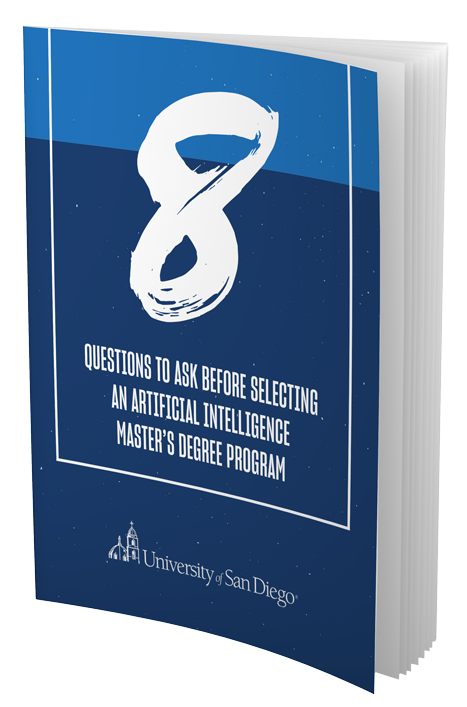The rise of big data presents a major challenge for businesses in today’s digital landscape. With a vast amount of unstructured data being generated on a daily basis, it is increasingly difficult for organizations to process and analyze this information effectively.
Natural language processing (NLP) presents a solution to this problem, offering a powerful tool for managing unstructured data. IBM defines NLP as a field of study that seeks to build machines that can understand and respond to human language, mimicking the natural processes of human communication. Read on as we explore the role of NLP in the realm of artificial intelligence.
What Is Natural Language Processing?
Natural language processing is a branch of artificial intelligence that focuses on giving computers the ability to understand human language. In order to create programs that can process and analyze large volumes of text and spoken words, NLP integrates the following elements:
- Computational linguistics
- Machine learning
- Deep learning
How Does NLP Combine the Three Elements?
Natural language processing combines computational linguistics, machine learning and deep learning to create powerful systems that can understand and process human language. Each element contributes uniquely to the overall effectiveness of NLP. Here’s how:
Computational Linguistics
This element provides the foundational theories and models of language structure, grammar and syntax. NLP uses this information to analyze and understand language at a granular level, ensuring machines can accurately process the rules and intricacies of human language.
Machine Learning
Here, algorithms are trained on vast amounts of textual data to recognize patterns and make predictions. By continuously improving through exposure to more data, machine learning enables NLP systems to adapt and refine understanding of language nuances over time.
Deep Learning
Utilizing neural networks, deep learning enables NLP to grasp context and subtle nuances in language. This is essential for sophisticated tasks such as sentiment analysis, language translation and speech recognition. Deep learning models, particularly those based on transformers like GPT-4, provide the computational power needed for advanced language comprehension and generation.
By integrating these three elements, NLP systems can effectively analyze, interpret and generate human language, making them invaluable tools for managing and understanding large volumes of unstructured data.
Another key aspect of NLP’s effectiveness lies in its ability to process language as well as understand its context and intent — an area where natural language understanding (NLU) plays a crucial role.
How Does Natural Language Processing Work?
Natural language processing can be structured in many different ways using various machine learning models, depending on what’s being analyzed. Some of the key algorithms and analyses used in NLP include:
- Syntax analysis, also known as parsing, which uses sentence structure and the rules of formal grammar to determine the exact meaning of text
- Sentiment analysis, which measures tone and intent and is useful in analyzing social media posts and online reviews
- Semantic analysis, which helps the machine learn about the less literal meanings of words and phrases
- Lexicons, which are lists of words and the emotions they evoke
- Word sense disambiguation, which is used in computational linguistics to ascertain which sense of a word is being used
- Lemmatization, which determines the context of a sentence and refers back to the base form of a word as it appears in the dictionary
- Stemming, which analyzes the end or beginning of a word to identify the common root form of the word
- Summarization, which provides a synopsis of large volumes of text data and is commonly used to summarize news reports
These algorithms process the input data to identify patterns and relationships between words, phrases and sentences and then use this information to determine the meaning of the text.
Natural Language Processing Tools and Techniques
Natural language processing tools and techniques provide the foundation for implementing this technology in real-world applications. There are various programming languages and libraries available for NLP, each with its own strengths and weaknesses. Two of the most popular NLP tools are Python and the Natural Language Toolkit (NLTK).
NLTK includes a comprehensive set of libraries and programs written in Python that can be used for symbolic and statistical natural language processing in English. The toolkit offers functionality for such tasks as tokenizing or word segmenting, part-of-speech tagging and creating text classification datasets. NLTK also provides an extensive and easy-to-use suite of NLP tools for researchers and developers, making it one of the most widely used NLP libraries.
In addition to the use of programming languages, NLP also relies heavily on statistical natural language processing, machine learning and deep learning techniques. The combination of algorithms with machine learning and deep learning models enables NLP to automatically extract, classify and label components of text and voice data. After that process is complete, the algorithms designate a statistical likelihood to every possible meaning of the elements, providing a sophisticated and effective solution for analyzing large data sets.
NLP Examples
Natural language processing has been utilized in various applications and fields, providing many different solutions to real-world problems. Here are some of the most common NLP examples in use today:
- Smart assistants: Also known as AI assistants, smart assistants use speech recognition to analyze patterns in voice commands and integrate natural language generation to respond. Commonly used voice assistants include Siri, Alexa, Cortana and Google Assistant.
- Chatbots: Similar to voice assistants but used in a chat environment using typed text entries, chatbots — like ChatGPT and Google’s Bard — learn to recognize context clues over time to provide better responses. They are widely used in customer service to handle inquiries and support.
- Autocomplete tools: These tools are trained to predict the next words in a text based on what has already been typed. Google began incorporating this technology in 2019 with Smart Compose.
- Language translation: Services like Google Translate use NLP to accurately capture the meaning and tone of the input language and translate it to the output language.
- Sentiment analysis: This NLP application is commonly used in social media analyses to discover consumer insights. It can be used to analyze ports, responses and reviews to track attitudes and sentiments about products, events, services, etc. Businesses and organizations can then use this information to develop better products and ad campaigns.
- Text extraction: NLP enables users to obtain pre-defined information from text, making it helpful in extracting keywords, features and named entities from large data sets.
- Content moderation: NLP enables users to monitor large amounts of user-generated content, thereby enabling companies to actively engage with customers. It can also assist with the enforcement of content filters in order to block unwanted content and spam.
- Email spam detection: NLP algorithms filter out spam emails and unwanted content by analyzing the text and identifying patterns characteristic of spam. This helps to keep inboxes clean and secure.
- Speech recognition:This technology converts spoken language into text. Applications include transcription services, voice-activated controls and real-time translation services.
The Use of AI in Natural Language Processing
As a crucial element of artificial intelligence, NLP provides solutions to real-world problems, making it a fascinating and important field to pursue. Understanding human language is key to the justification of AI’s claim to intelligence. With the help of deep learning models, AI’s performance in Turing tests is constantly improving. In fact, Google’s Director of Engineering, Ray Kurzweil, anticipates that AIs will “achieve human levels of intelligence” by 2029.
NLP is a fast-growing niche of computer science, and it has the potential to alter the workings of many different industries. Its significance is a powerful indicator of the capabilities of AI in its pursuit to reach human-level intelligence. As a result, the progress and advancements in the field of NLP will play a significant role in the overall development and growth of AI.
Since it is sure to play a crucial role in shaping the future of AI and its impact on the world, the field of NLP is an important niche worth exploring. There is still much to be discovered, understood and developed when it comes to natural language processing and artificial intelligence.
Careers in Natural Language Processing
Natural language processing is a rapidly growing field with a myriad of career paths for those interested in working with AI and language technologies. With the increasing demand for AI and NLP solutions, the industry is in need of skilled professionals who can train machines to understand and process human language. The following are just a few examples of the potential career fields related to NLP:
- NLP Researcher: NLP researchers are at the forefront of developing new models and techniques for natural language processing. They are responsible for exploring new algorithms and approaches to language understanding, often conducting experiments and publishing research findings in academic journals.
- NLP Analyst: NLP analysts use existing NLP tools and techniques to solve business problems and provide insights. They work with large data sets to uncover patterns and draw conclusions that can be used to inform decisions.
- NLP Scientist: NLP scientists work to advance the field of NLP by developing new algorithms and approaches to language understanding. They often collaborate with other researchers and engineers to create innovative solutions to challenging NLP problems.
- NLP Engineer: NLP engineers take the research and theories developed by NLP scientists and apply them to practical applications. They are responsible for building and implementing NLP systems that solve real-world problems, such as speech recognition and language translation.
Frequently Asked Questions
As the demand for NLP professionals continues to rise, now is the perfect time to pursue an educational path that helps you achieve your goals. To help you make an informed decision, download our comprehensive guide, 8 Questions to Ask Before Selecting an Applied Artificial Intelligence Master’s Degree Program.



![Preview image of Master’s Comparisons [Data Science vs. Analytics vs. 3 More]](https://onlinedegrees.sandiego.edu/wp-content/uploads/2022/01/masters-in-data-analytics-1.jpg)
